What Do Guppies Eat?
All 23 Things Guppies Can Safely Fit In Their Mouths
By the time you finish with this guide, you’ll know exactly what do guppies eat.
We’ll go over every option, from commercial food to live food and vegetables, and even cover what to feed your guppies when you’re out of food.
What Do Guppies Eat
Guppies mostly eat fish meal, live food (like microworms or brine shrimp) and vegetables.
Here’s a list of what you can feed them:
- Tropical fish food
- Brine Shrimp
- Daphnia
- Vinegar Eels
- Guppy Fry
- Microworms
- Egg Yolk
- Beef Heart
- Chicken Breast
- Cucumber
- Zucchini
- Spinach
- Peas
- Lettuce
- Broccoli
- Cauliflower
- Green Beans
- Bell Peppers
- Pumpkin
- Squash
- Sweet Potatoes
- Cabbage
- Kale
What Do Guppies Eat In The Wild
You may already know that guppies are wild fish that are found mostly in the river basins of the Amazon River. What that really means is that guppies rely on their foraging and hunting skills to survive, which also means they are a pretty diverse diet in the wild.
Here’s what a typical meal for a guppy can look like:
Algae
Algae looks like green fuzz that grows on rocks, plants, and on the water surface. If you ever looked at a home fish tank and the water looked green- it was because of algae.
Aquatic Insects
Think mosquito larvae, small crustaceans, and water fleas. All of those are rich in protein, which is super important for tropical fish like guppies.
Zooplankton
Remember Mr. Crab’s arch enemy? That’s plankton. It’s ample in nature because the ecosystem is huge- but unless you use an additive you’re not going to have enough to consider it a food source.
Plants
The beauty about guppies is that they really aren’t picky. Live plant? That goes. Dead plant? Double scoop, please. You can think about it this way- if they can fit their mouth around it- they’ll eat it.
Guppies don’t like limiting themselves in food options because they never know when is the next time they’ll eat out in the wild.
What Do Guppies Eat?
Commercial Fish Food
Tropical fish food is the bread and butter of a guppy’s diet. While you can make a tank thrive only on “natural” and homemade foods- store-bought, ready-to-serve food is a whole lot simpler.
Tropical fish food comes in my shapes and forms- and is designed specifically for – you guessed it – tropical fish (just like your guppies!)
That means it meets all of their nutritional and dietary needs.
Commercial Fish Food
Guppy food comes in all forms and types. Here’s a quick rundown:
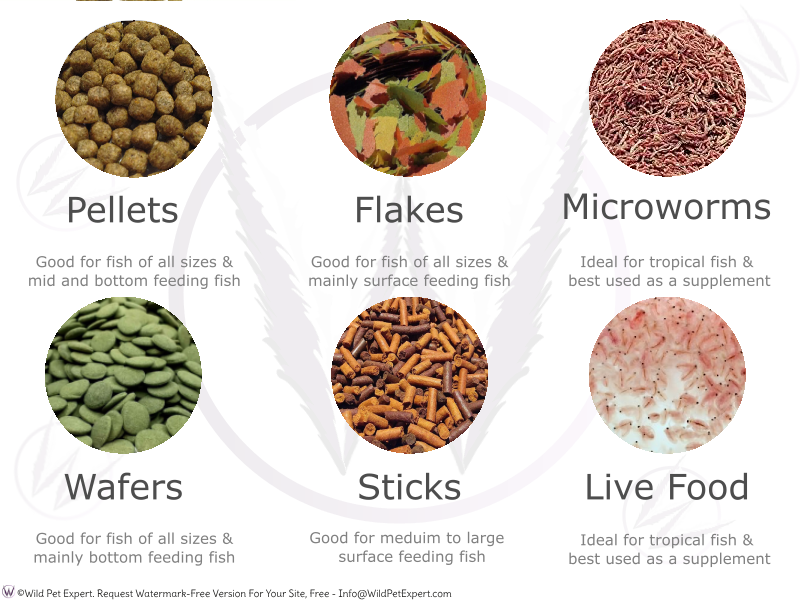
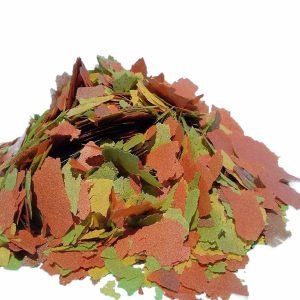
Fish Flakes
Flakes are one of the most popular options out there for guppies. The float on the surface and allow everyone to have their fair share. They are also designed to meet all of your guppies’ dietary needs.
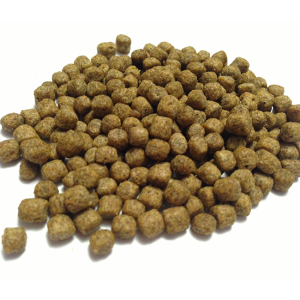
Fish Pellets
Pellets are another good option, although flakes are more popular.
Pellets are designed with the medium swimming fish in mind- so they sink to the medium/ bottom of the tank to be more accessible to those kinds of fish.
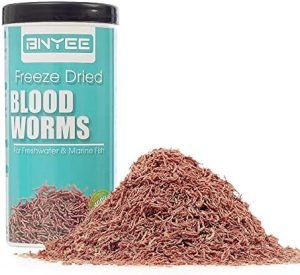
Microworms
Sounds gross, but… well… there’s no but.
Microworms are freeze-dried (and totally dead) worms that are packed with proteins that guppies go crazy for. They are fun food because you can use tweezers to feed your guppies in a more interactive way.
And here are a few additional forms of fish food you might encounter, although they are less targeted at guppies.
-
Sticks: Floaty snacks for medium and large fish – they scoop ’em up from the surface.
Wafers: Sinkers that crustaceans and bottom-feeding fish adore. They’re slow to soak up water, so they last a while and are perfect for fish with fancy scraping skills.
-
Chips: Shaped like flat discs and super stable in water. Big fish love ’em, but even the little guys can nibble on these crunchy delights, one piece at a time!
Commercial Fish Food Pros and Cons
Pros
– Convenient and readily available
– Balanced nutrition for everyday feeding
– Promotes growth, color enhancement, and overall health
– Reduces the risk of nutrient deficiencies
Cons
– May lack some variety and natural components found in wild diets
– Listen, you’ll struggle to convince me against good ole’ fish food. It’s shelf stable, inexpensive, and gets the job done.
How Much Does Commercial Guppy Food Cost
8 bucks seems to be the medium mark, depending on the quantity of food you buy at a time.
100 grams, or 3.5 ounces of food should last you for quite a while. Guppies really don’t eat that much, and when you factor in that some of their diet is treats (more on that in a second) then the food does last a long time.
Where to Buy Commercial Guppy Food
You can buy guppy food either online (at places like Amazon or Chewy’s) or at your local fish store.
Tropical fish food is very readily available and I can’t think about a pet or fish store that isn’t going to have it.
What Do Guppies Eat?
Live and Frozen Foods
Remember how we mentioned earlier that guppies feed on mosquito larvae and small crustaceans out in the wild?
Well, they can do the same at home too.
Now, I’m not petitioning for you to breed mosquito larvae in your garage. That sounds like a horror story in the making.
But you do have quite a few different options when it comes to live food.
P.S.
If you plan on housing your guppies in a pond that might be prone to mosquito larvae, then guppies are a great, ecological solution- one that you should explore.
Guppy Live Food Options
When it comes to live food, options are also plenty. Here are just some of them:
Brine Shrimp
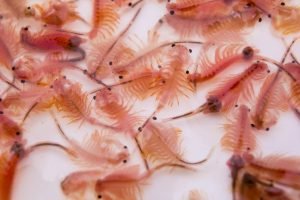
Those are the ones that you’ll see most often on social media.
You’d need to culture them and then feed them to your guppies with a pipette. They are packed with protein and are the easiest ones to feed overall
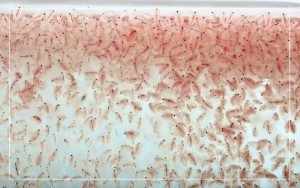
Daphnia
Daphnia is very similar to brine shrimp with 1 difference: you need to feed it yeast to grow it.
I’ll explain why only breeders who breed on the scale go through the trouble of daphnia.
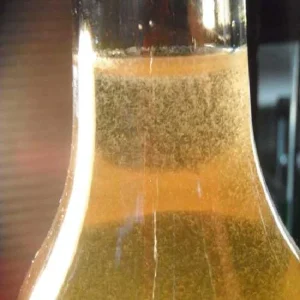
Vinegar Eels
Similar to brine shrimp and daphnia, you could raise vinegar eels- which are tiny organisms packed in protein that guppies love to feed on.
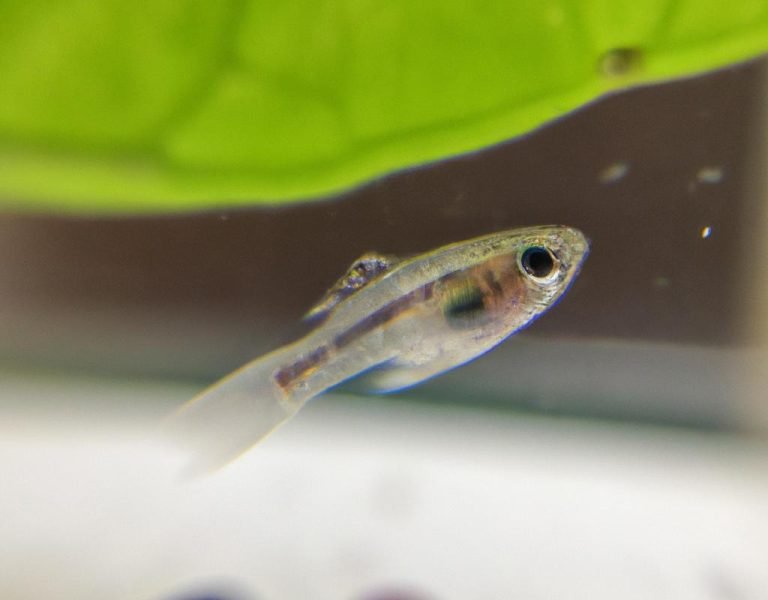
Their Own Babies
Yea, no, that’s not a typo.
Guppies breed quickly, and a lot. A single female can spit out anywhere from 20-40 fry every 30 days. Guppies aren’t attached to their young the way we are, and guppy fry looks, behaves, and tastes just like food- it gets eaten.
Pros And Cons Of Guppy Live Food
Pros
– High in protein and essential nutrients
– Stimulates natural feeding behaviors
– Promotes growth, color development, and reproductive success
– Adds variety to the diet
Cons
– Requires additional effort in preparation and storage
– Can be more expensive compared to dry foods
– May carry the risk of introducing parasites or diseases if not from a reputable source
Reviewing the Top 3 Live Food Options of What Guppies Eat
Brine Shrimp
Brine shrimp are one of the best feeds you can ever give your guppies.
It’s about 60% protein and only around 20% fat which means it makes your guppies big and strong.
Strong guppies live longer, have more energy to swim and entertain you and have bolder colors.
How to Get Started With Brine Shrimp
All live food will require cultivation. Out of them all, brine shrimp is probably the simplest.
You’d buy a kit that includes a container and an air pump. Add water, salt, and shrimp and turn on.
Then, come back in 1-3 days and feed your guppies.

A batch will usually last you for a while. Guppies only need a few pipettes of food as part of their diet.
whatever your guppies can’t eat right now should be frozen. The freeze, use a pipette and a clean ice cube tray. Pipe the brine shrimp into ice cube molds, and freeze. Then you can feed your guppies an ice cube at a time.
Daphnia
Daphnia is a small creature also called a water flea. While they make great feed for guppies, they are not as streamlined to work with.
Reason #1: They Require Space
First, they require a large surface area. their tank can be more shallow, but it tends to be larger because the surface area is the name of the game here.
Reason #2: It Feeds On Yeast.
If you ever had the displeasure of smelling the yeast solution made in bread making then you know what I’m talking about.
If you don’t- allow me to explain in 5 simple words: it smells like hot garbage.
What That Means For You.
You’d need a lot more space and a lot more ventilation to get the same result you’d get with a simple brine shrimp kit.
And not to mention that god forbid something knocks that tub on the floor, be it a cat or a child.
If that happened to me, I’d move.
Vinegar eels
Vinegar eels are very similar to brine shrimp and daphnia. They are small creatures that can be fed to your guppies but grow in vinegar instead.
I won’t waste too much of your time on them.
The start in a whole bottle of vinegar, to which a little bit of water is added to it forms a layer.
Once they hatch they rise to the water in search of oxygen. This is when you can harvest them and use them as feed.
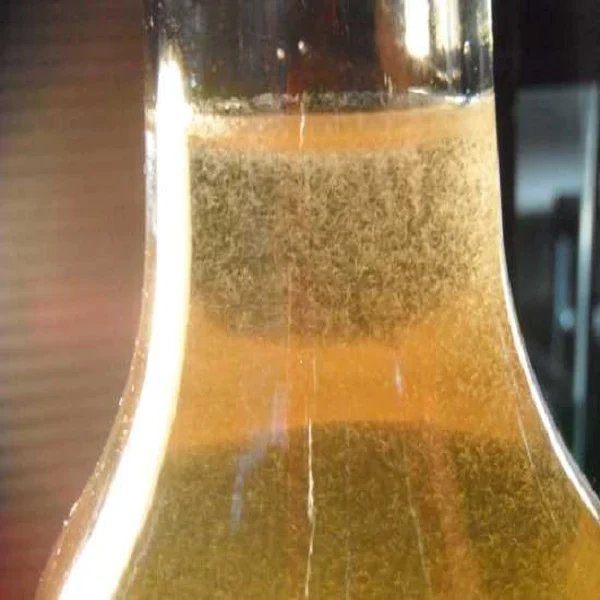
That also means that this whole smells like vinegar, which is why I don’t recommend them when compared to brine shrimp.
Do Guppies Eat Their Babies
Oh yeah, big time. Guppies eat their young because they don’t get attached to their babies we do.
It takes us 9 months to have 1 baby, but a single female will give birth to 20-40 fry every 30 days.
Fry also looks incredibly similar to brine shrimp and water fleas (daphnia) and honestly- I don’t think they can tell them apart. I think the logic behind those decisions is: “Is it small enough to fit in my mouth?” and if the answer is yes- they’ll go for it.
How Much Does Guppy Live Food Cost?
Brine shrimp costs about 10 dollars for a bag of eggs, in about a 0.5-ounce pouch.
A kit for shrimp brining is anywhere from 15-25 dollars.
Where To Buy Guppy Live Food
Pet stores should carry brine shrimp, but it’s not guaranteed. It’s best to call to make sure.
Pet stores with a specialty in fish will most likely carry it, but I usually get mine online.
What Vegetables Do Guppies Eat?
We’ve already mentioned how guppies will eat virtually anything their mouth is big enough to fit.
Now, not all vegetables are as streamlined as others.
Cucumbers, zucchini, and carrots are the easiest to feed because you can just thread them on a skewer.
But peas, spinach, kale, pumpkin, and others will leave the tank a big mess.
What Vegetables Can Guppies Eat?
Spinach
In moderation, spinach is a great source of nutrients.
Zucchini
Guppies enjoy zucchini as a fiber-rich, low-calorie treat that supports their digestive health and overall well-being.
Cucumber
Cucumbers are highly popular because they are easy to feed (just like zucchini).
Peas
Peas are a great way to accelerate your guppies’ metabolism and help relieve constipation. Before serving, have them blanched and de-shelled.
Kale
Small amounts, as it can be tough to digest.
Cabbage
small amounts, as it can cause digestive issues in large quantities.
Bell peppers
Red, green, or yellow.
Lettuce
Small amounts, as it can cause digestive issues in large quantities.
Carrots
Boiled or blanched to soften.
Broccoli
Small florets- blanched to soften.
Green beans
Blanched and chopped.
Cauliflower
Small florets- blanched for a few minutes to soften.
Pumpkin
Cooked and mashed. Limit your quantity, because pumpkin will cloudy your water.
Squash
Cooked and mashed, and just like pumpkin- they’ll mess up your water.
Sweet potato
cooked and mashed- and I recommend you don’t overboard with those ones. As you guessed- they’ll trash your tank.
Can Guppies Eat Cucumber
Yes, guppies can enjoy cucumber as a healthy treat.
It’s packed with vitamins and fiber, but make sure to blanch or thinly slice it first to avoid digestive issues.
Cucumber is also very streamlined to feed- because it doesn’t make a mess. That leads us to our next point:
How To Feed Guppies Cucumber
Wash and peel: Start by thoroughly washing the cucumber to remove any dirt or pesticide residue. Peel the skin if desired, especially for waxed cucumbers.
Slice thinly: Cut the cucumber into thin slices or small chunks. Aim for pieces small enough for your guppies to easily nibble on, about the size of their heads.
Blanch (optional): Blanching helps soften the cucumber and makes it easier for the guppies to digest. Simply drop the cucumber slices into boiling water for 30-60 seconds, then remove and rinse with cold water.
Clip or weigh down: Place the cucumber slices in a vegetable clip or skewer attached to the side of the tank. This prevents them from floating around and makes it easier for the guppies to reach. You can also use a fork to gently press the slices down to the bottom of the tank.
Bonus tips:
- Avoid cucumber with seeds, as they can be difficult for guppies to digest.
- Don’t leave uneaten cucumber in the tank for too long, as it can decompose and foul the water.
Pros
– Provides essential fiber, vitamins, and minerals
– Aids in digestion and overall gut health
– Enhances coloration and vitality
– Supports natural foraging behaviors
Cons
– Should be given in moderation to avoid overfeeding
– May not be as readily accepted as other food types
– Some guppies may not show a strong preference for vegetable-based foods
Guppy Homemade Fish Food
Beef Heart
Beef liver is high in protein, vitamins A and B, and iron – and guppies will eat it.
How did someone come up with it as a food option- god only knows.
Beef liver is annoying to work with- to say the least.
You have to cook it thoroughly, and then blend it down to almost liquid. That liquid will most likely cloudy your water up.
On the other hand, beef liver is pretty fatty for guppies- so you have to be careful not to overfeed them with it.
Egg Yolk
Egg yolk is pretty popular, and I’ll tell you why:
When guppies are born, each fry is born within a yolk sac. That sac serves as a food source for the minutes-old fry to feed on for a couple of days until they start seeking food.
Just like beef liver, you’d need to cook the yolk through. And just like beef liver, don’t expect crystal clear water after it.
Chicken Breast
Here’s the thing about chicken breast- some love it, some hate it.
Some will say it’s too high in protein and unnatural for fish to eat. Can’t really argue with that logic- I never saw fish come out of the water and hunt in a coop.
But chicken breast is high in protein, and I guess at least one person had a good result with it- otherwise, it wouldn’t have been so popular on the internet.
I’ve never fed my guppies chicken breast, mainly because it’s like the 17th best thing to feed them.
FAQ's
Can Guppies Eat Betta Food?
Yes- because its the same. Guppies and bettas are both tropical fish- even though they come from different parts of the world. They share the same water parameters requirements and even the same diet.
Can Guppies Eat Goldfish Food?
Guppies can eat goldfish food, but not long-term. Goldfish food is higher in carbs, and goldfish are way bigger fish than guppies. That means it doesn’t meet their dietary needs and is harder for them to wrap their mouths around.
How Long Can Guppies Go Without Food?
You have up to 14 days that guppies can go without food. In you’re heading on vacation, you should change the water right before you leave- as poor water conditions are way more harmful to your fish than the lack of food.
Do Guppies Eat Algae?
You have up to 14 days that guppies can go without food. In you’re heading on vacation, you should change the water right before you leave- as poor water conditions are way more harmful to your fish than the lack of food.
